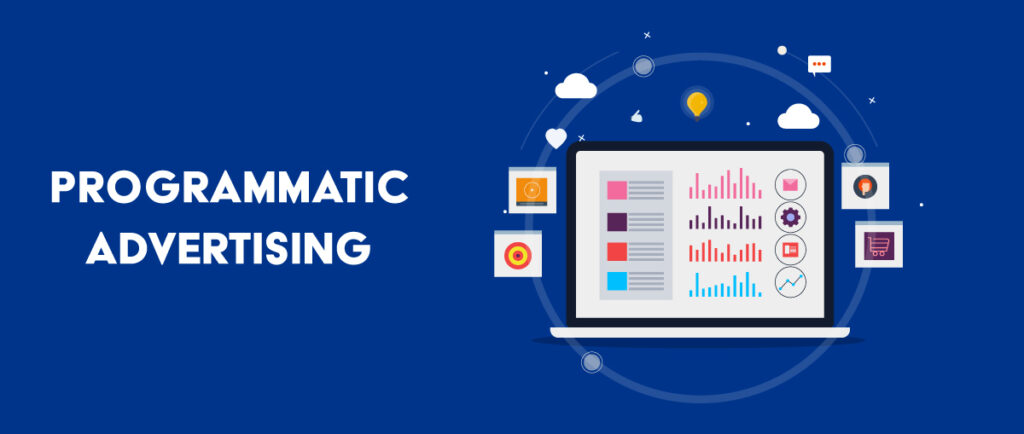What is Programmatic Advertising?
It is the automated process of buying and selling digital ad space in real time using artificial intelligence (AI) and data-driven algorithms. Unlike traditional media buying, which relies on manual negotiations, programmatic advertising optimizes ad placements dynamically based on audience behavior, demographics, and engagement metrics.
How Does Programmatic Advertising Work?

Programmatic advertising operates through an automated auction system called real-time bidding (RTB). Here’s how the process works:
- User Visits a Website or App – When a user visits a webpage or opens an app that supports programmatic ads, an ad request is sent to an ad exchange.
- Ad Exchange Initiates an Auction – The exchange evaluates user data (location, browsing history, interests) and sends the request to multiple advertisers.
- Advertisers Place Bids – Advertisers bid in real-time to display their ad. Bidding factors include relevance, budget, and engagement potential.
- Winning Ad is Displayed – The highest bidder’s ad appears instantly, all within milliseconds.
- Performance Tracking & Optimization – Advertisers monitor ad performance and adjust targeting, budget, or creatives for better efficiency.
Types of Programmatic Advertising
1. Real-Time Bidding (RTB)
- The most common method, where ad impressions are bought and sold in real time through an auction-based system.
2. Private Marketplace (PMP)
- A controlled version of RTB, where selected advertisers bid for ad inventory within exclusive, invitation-only auctions.
3. Programmatic Direct
- Ads are purchased directly from publishers without bidding, ensuring premium placements with fixed pricing.
4. Preferred Deals
- Advertisers negotiate a fixed price for premium ad placements before the inventory goes to auction.
Benefits of Programmatic Advertising
1. Efficiency & Automation
- Reduces manual work and speeds up the ad-buying process.
2. Precise Targeting
- Uses AI and big data to reach highly relevant audiences based on behavior, demographics, and interests.
3. Cost-Effectiveness
- Ensures advertisers pay only for valuable impressions, optimizing budget utilization.
4. Scalability
- Enables advertisers to reach audiences across multiple platforms, including websites, apps, and connected TV (CTV).
5. Real-Time Optimization
- Campaign performance can be monitored and adjusted instantly for better results.
Where Do Programmatic Ads Appear?
- Display Ads – Banner ads on websites and apps
- Video Ads – YouTube, OTT platforms, and social media
- Native Ads – Sponsored content that blends with website aesthetics
- Social Media Ads – Facebook, Instagram, LinkedIn, Twitter
- Connected TV (CTV) & Over-The-Top (OTT) Ads – Ads on smart TVs and streaming services
Conclusion: Why Programmatic Advertising Matters
Programmatic advertising has revolutionized digital marketing by making ad buying faster, smarter, and more data-driven. With its ability to deliver personalized ads to the right audience at the right time, programmatic advertising helps businesses maximize their ad spend and improve campaign performance efficiently.
As digital marketing continues to evolve, understanding what programmatic advertising is and leveraging its capabilities can give businesses a competitive edge in today’s advertising landscape.


